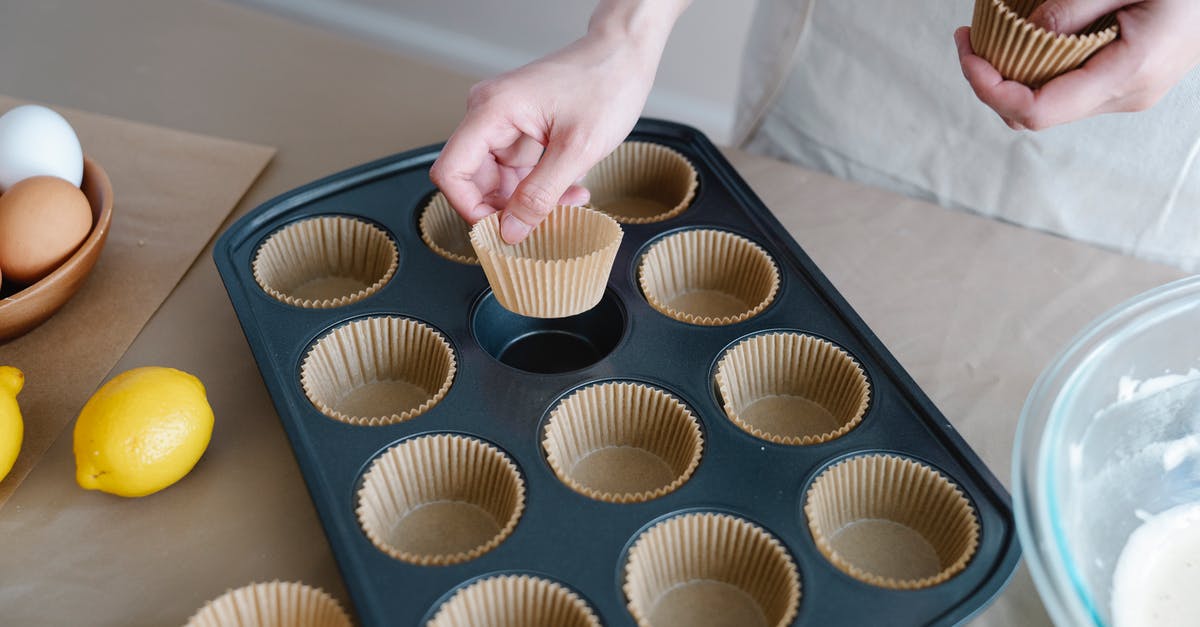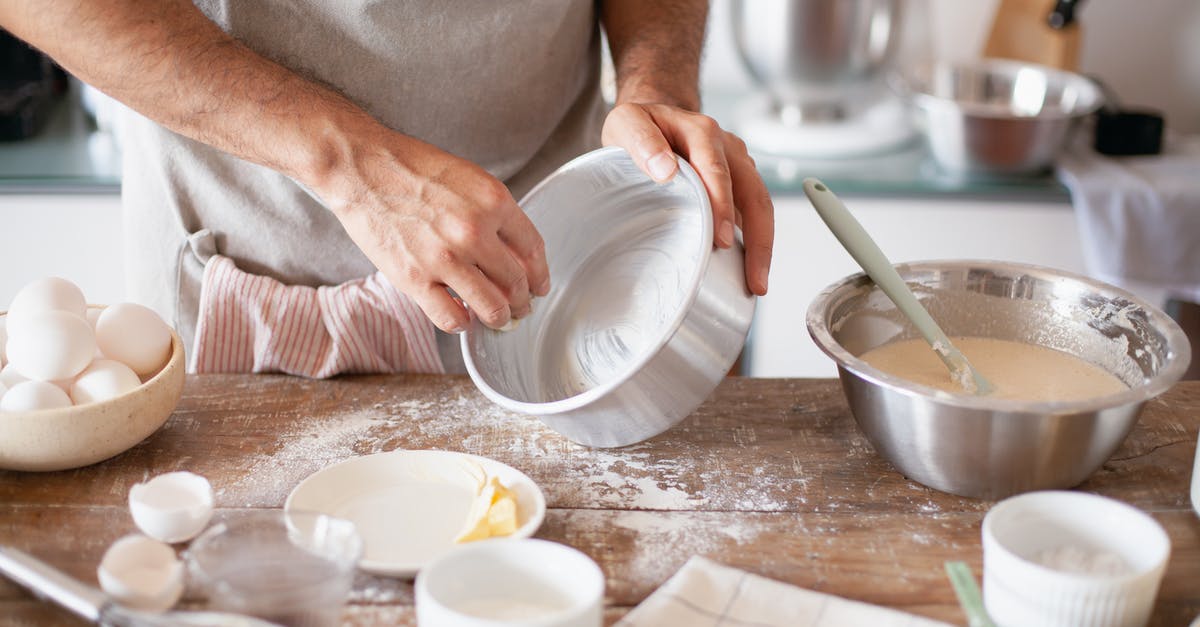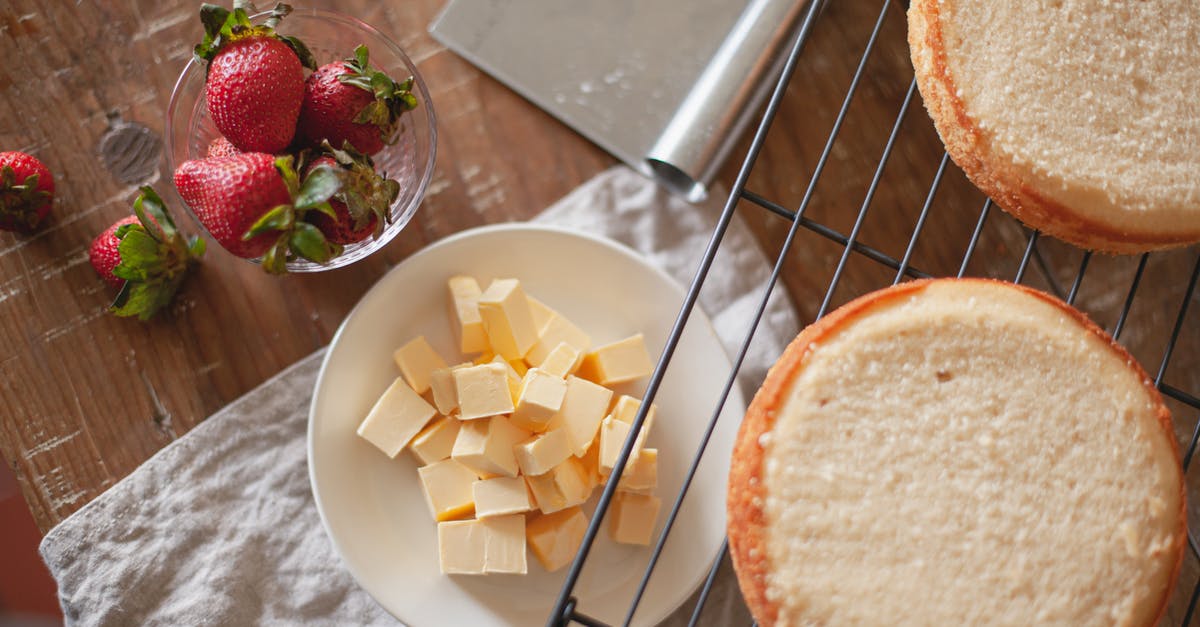Sponge cake - Why mix milk and butter instead of folding?

From what I understand, after whisking the eggs and sugar you fold in the flour to prevent flattening the air bubbles in the mixture you just incorporated. So why then do some recipes say you should stir or whisk melted butter and milk mix afterwards to the egg-sugar-flour mix? Does this not destroy the air bubbles?
Best Answer
I can't say why you'd want to do this in general for other types of sponge cakes. But in the linked recipe it's very clear. The reason is because the milk/butter mixture is heated "to just under a boil" and according to the instructions should still be at least "hot (about 150F)" when added.
In this case, you take out a small portion of the batter, then add this hot liquid mixture to it. If you don't mix rapidly while doing so and if the temperature is a little off and too hot, you run the risk of coagulating the eggs in the batter (which would obviously not result in a desirable texture to add back into the rest of the batter).
Here, as the recipe notes, you're using this portion of the batter as a liaison, which is a fancy word for a mixture the serves as an intermediary temperature between something hot and something cooler. By adding the hot milk/butter mixture to a small portion of the batter (rather than the whole batter), you cool it enough so that it won't risk coagulating eggs in the whole batter.
But in the process, you need to whisk rapidly to avoid small egg bits forming curds and becoming solid, so you're sacrificing some of the bubbles in this portion of the batter to create an appropriate intermediary temperature mixture, which then is presumably supposed to be gently folded back into the rest of the batter.
Now, the question is why you're heating the milk in the first place. There is a whole genre of cakes called "hot milk cakes" or "hot milk sponge cakes," which seem to have originated in the early 20th century. They use this rather unusual mixing method, where you beat the sugar and eggs for a long time first, then add flour and dry ingredients, and then add liquid and fat at the end.
I'd speculate that the hot milk serves two purposes: (1) it helps melt the butter, which both allows the liquid butter to combine easier with the existing mixture and causes it to coat the flour better which results in a tender crumb (less gluten network formation), and (2) it raises the temperature of the batter above room temperature, thus shortening the time before the cake structure starts to solidify while baking. My guess is that this is helpful because the sugar/egg foam is less stable than, say, a sugar/butter "creamed" foam (as in a pound cake), and if you don't get the eggs to coagulate fast enough, the whole thing might collapse. (Again, that last part is just a guess.) The goal is to end up with a very light and tender cake.
Pictures about "Sponge cake - Why mix milk and butter instead of folding?"



Quick Answer about "Sponge cake - Why mix milk and butter instead of folding?"
The milk and the butter make for a tender cake that is even lighter than classic sponge cakes. Some recipes also include oil, which will give a more moist texture and mouthfeel than butter does. This recipe calls for a chemical leavener, baking powder, which gives this sponge cake a more open crumb and a light texture.What makes a cake moist and fluffy?
Room Temperature Butter / Don't Over-Cream Most cakes begin with creaming butter and sugar together. Butter is capable of holding air and the creaming process is when butter traps that air. While baking, that trapped air expands and produces a fluffy cake. No properly creamed butter = no air = no fluffiness.Should you add milk to cake batter?
Is it necessary to add milk in a cake? It's necessary to add liquid to a cake, so if the recipe calls for milk, it's best to use milk. There are also cake recipes that call for water, buttermilk, sour cream or a combination of things that will make up the liquid ratio.What does butter do in a cake mix?
It allows for steam and carbon dioxide to be trapped in the batter as it is bakes, which causes your cake to rise. The butter also helps to create a light and tender texture in cake batter. In the all-in-one method, liquid butter and other liquid ingredients are mixed with dry ingredients in a single step.What are the mixing methods used for variety of sponge and cakes?
4 Ways to Mix Cake Batter for Superior Results- The Creaming Method. The creaming method is the most common for mixing cake batter. ...
- Reverse Creaming. The reverse creaming method, also called the \u201cpaste\u201d mixing method, is another common way to mix cake batter. ...
- The Blended Way. ...
- Creating Light, Airy Foam.
How to make a perfect sponge cake. (No butter)(from Korea)
Sources: Stack Exchange - This article follows the attribution requirements of Stack Exchange and is licensed under CC BY-SA 3.0.
Images: Felicity Tai, Los Muertos Crew, Los Muertos Crew, Los Muertos Crew
